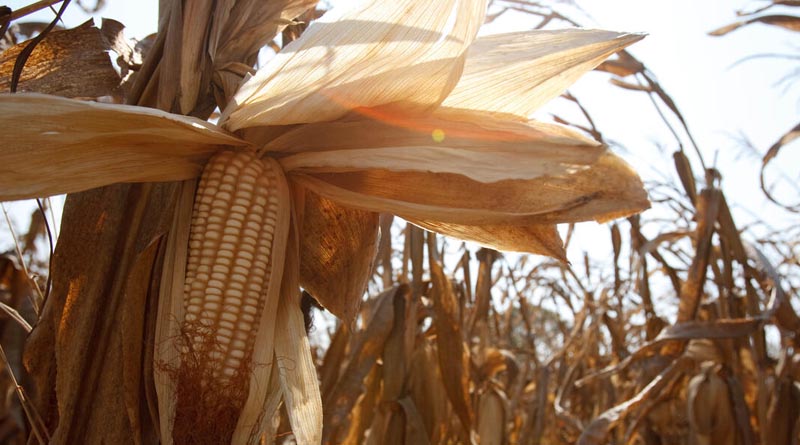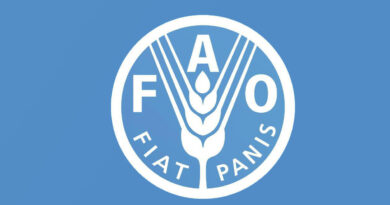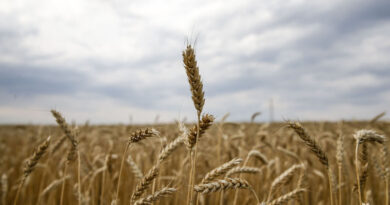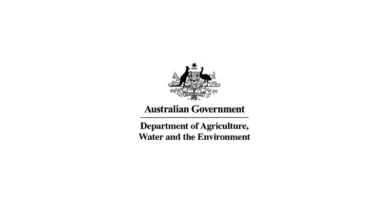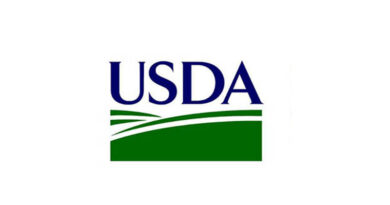FAO Food Price Index down again in January led by lower wheat and maize prices
02 February 2024, Rome: The benchmark for world food commodity prices fell further in January, albeit slightly, led by decreases in the prices of cereals and meat, which more than offset an increase in the sugar prices, the Food and Agriculture Organization of the United Nations (FAO) reported today.
The FAO Food Price Index, which tracks monthly changes in the international prices of a set of globally-traded food commodities, averaged 118 points in January, down 1 percent from December and 10.4 percent from its corresponding value a year ago.
The FAO Cereal Price Index declined by 2.2 percent from the previous month. Global wheat export prices declined in January driven by strong competition among exporters and the arrival of recently harvested supplies in the southern hemisphere countries, while those of maize fell sharply, reflecting improved crop conditions and the start of the harvest in Argentina and larger supplies in the United States of America. By contrast, price quotations for rice rose 1.2 percent in January, reflecting a strong export demand for Thai and Pakistani higher quality Indica rice and additional purchases by Indonesia.
The FAO Vegetable Oil Price Index rose marginally by 0.1 percent from December – but was still 12.8 percent lower than a year earlier – reflecting moderate increases in international palm and sunflower seed oil prices offsetting declines in the prices of soy and rapeseed oils. World palm oil prices were driven by seasonally lower production in major producing countries and concerns over unfavourable weather conditions in Malaysia. Meanwhile, increased import demand slightly pushed up sunflower seed oil prices. By contrast, international soy and rapeseed oil prices declined on account of prospects for large supplies from South America and lingering ample availabilities in Europe, respectively.
The FAO Dairy Price Index remained virtually unchanged from its revised December value, standing 17.8 percent below its value a year ago. In January, international price quotations for butter and whole milk powder increased largely due to higher demand from Asian buyers, nearly offsetting declines in those for skim milk powder and cheese.
The FAO Meat Price Index declined for the seventh consecutive month by 1.4 percent from December, as abundant supplies from leading exporting countries drove down international prices of poultry, bovine and pig meats. By contrast, international ovine meat prices increased on high global import demand and lower supplies of animals for slaughter in Oceania.
The FAO Sugar Price Index in January was up 0.8 percent from the previous month, underpinned by concerns over the likely impact of below-average rains in Brazil on sugarcane crops to be harvested from April, coupled with unfavourable production prospects in Thailand and India.
Record cereal output in 2023
World cereal production in 2023 is seen on track to hit an all-time record high of 2 836 million tonnes – up 1.2 percent from 2022, according to new forecasts in the latest Cereal Supply and Demand Brief, also released today.
The global coarse grain output is now pegged at an all-time high of 1 523 million tonnes, following a 12-million-tonne upward adjustment this month. The bulk of the revision reflects new official data from Canada, China (mainland), Türkiye and the United States of America, where a combination of higher yields and larger harvested areas than previously expected has led to higher maize production estimates.
World cereal utilisation in 2023/24 is now forecast at 2 822 million tonnes, up 8.9 million tonnes from the December forecast and surpassing the 2022/23 level by 1.2 percent, led by greater-than-earlier anticipated feed use, especially in the European Union as well as in Australia and the United States of America.
Consequently, the 2023/24 global cereal stocks-to-use ratio is forecast at a comfortable level of 31.1 percent, exceeding the 2022/23 level of 30.9 percent.
Global trade in cereals in 2023/34 is now forecast to reach 480 million tonnes, up by 0.8 percent from the preceding year, led mostly by larger traded volumes foreseen for coarse grains while world trade in wheat and rice could actually contract.
Also Read: Rallis India scales up supply chain effectiveness through digital platform ‘Plan Guru’
(For Latest Agriculture News & Updates, follow Krishak Jagat on Google News)

